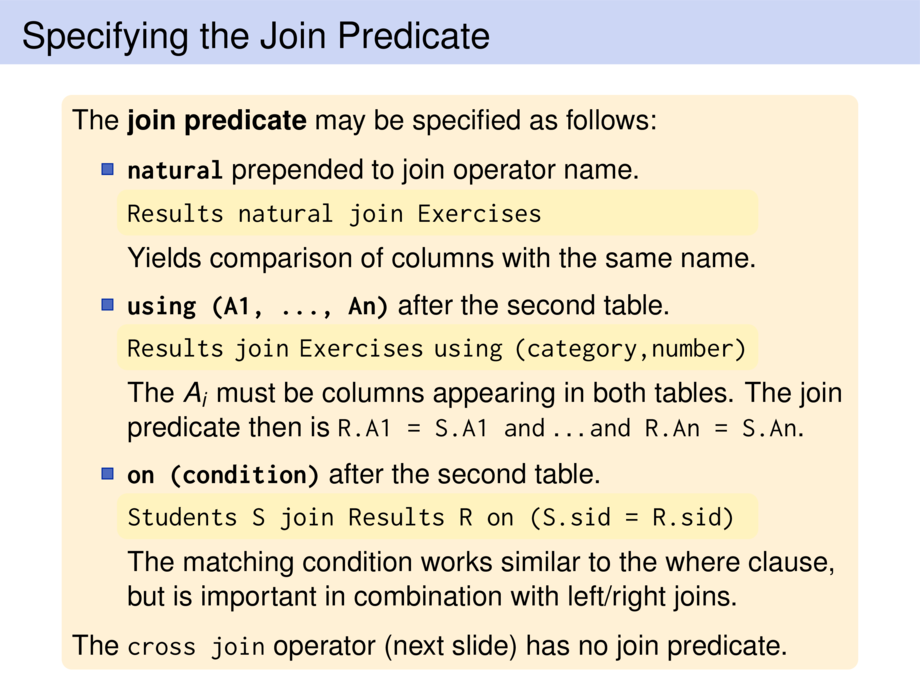



































































































209/224
\begin{frame}
\frametitle{Specifying the Join Predicate}
\begin{goal}{}
The \emph{join predicate} may be specified as follows:
\begin{itemize}
\smallskip
\item
\emph{\sql{natural}} prepended to join operator name.\\
\begin{code}{0.8\textwidth}{}
\sql{Results natural join Exercises}
\end{code}\\
Yields comparison of columns with the same name.
\smallskip
\item
\emph{\sql{using (A1, ..., An)}} after the second table.\\
\begin{code}{0.8\textwidth}{}
\sql{Results join Exercises using (category,number)}
\end{code}\\
The $A_i$ must be columns appearing in both tables.
The join predicate then is \sql{R.A1 = S.A1 and} \ldots \sql{and R.An = S.An}.
\smallskip
\item
\emph{\sql{on (condition)}} after the second table.\\
\begin{code}{0.8\textwidth}{}
\sql{Students S join Results R on (S.sid = R.sid)}
\end{code}\\
The matching condition works similar to the where clause,
but is important in combination with left/right joins.
\smallskip
\end{itemize}
The \sql{cross join} operator (next slide) has no join predicate.
\end{goal}
\end{frame}

